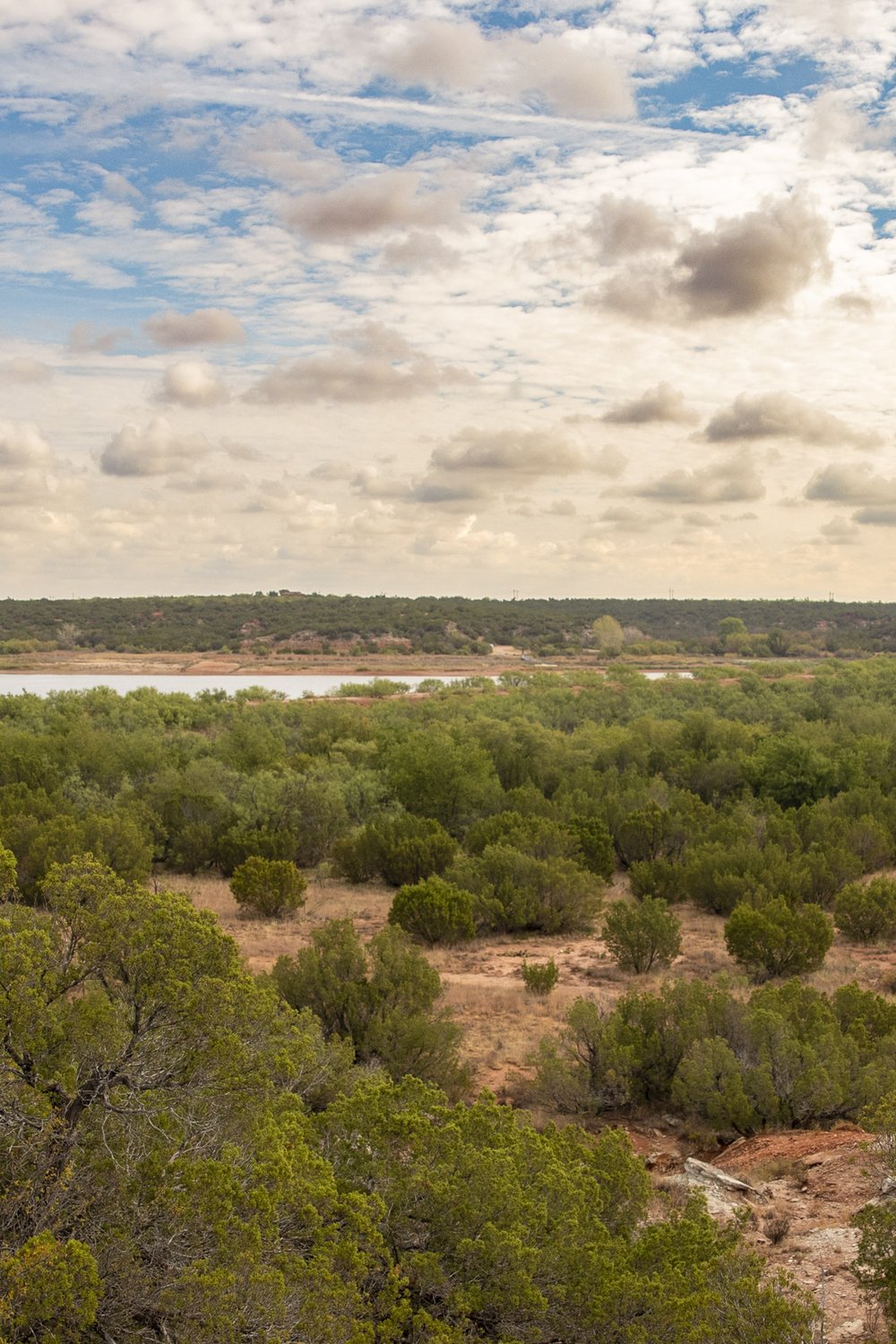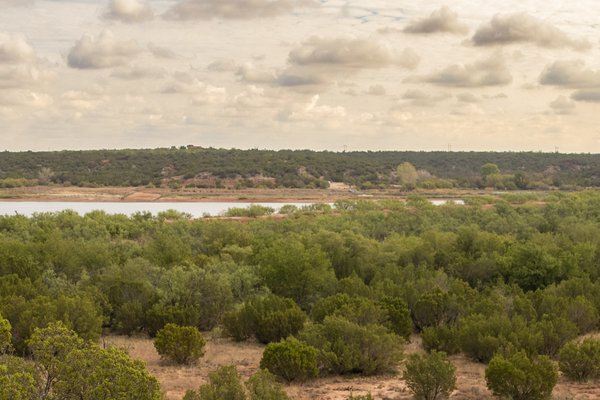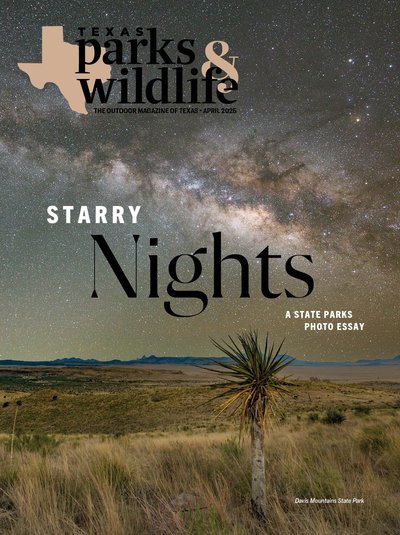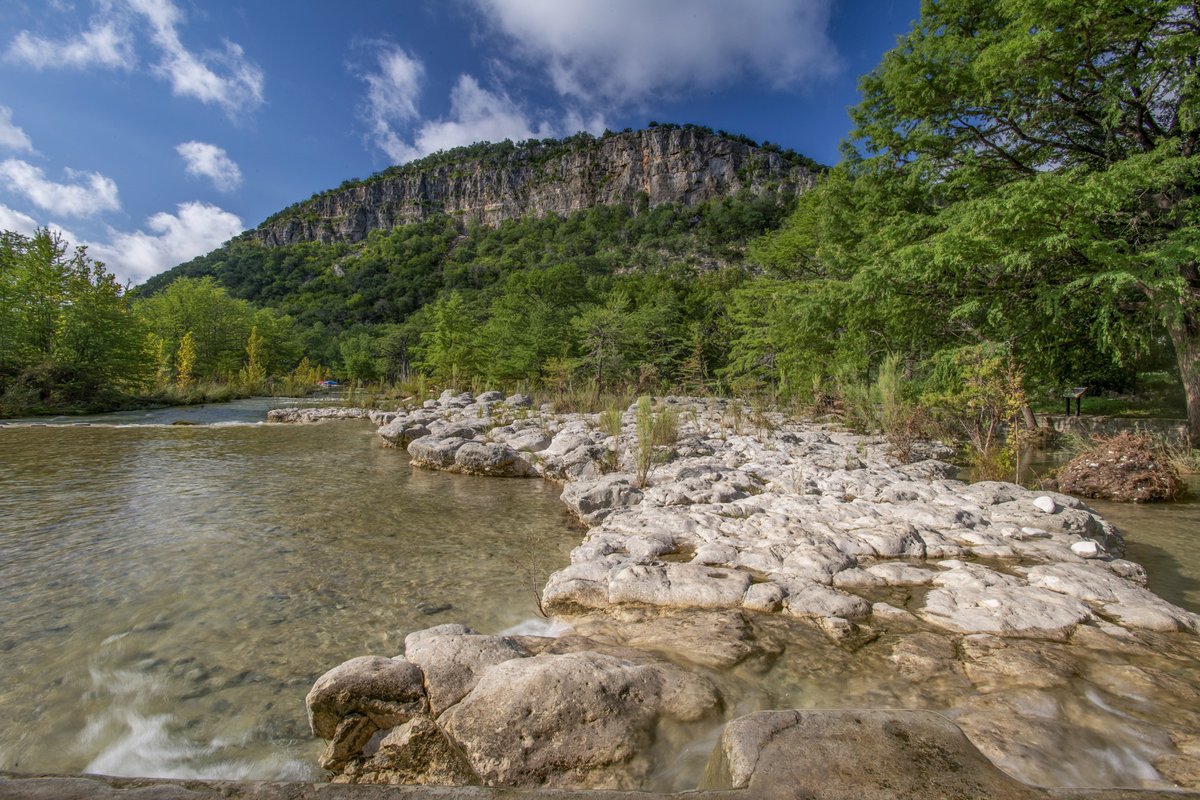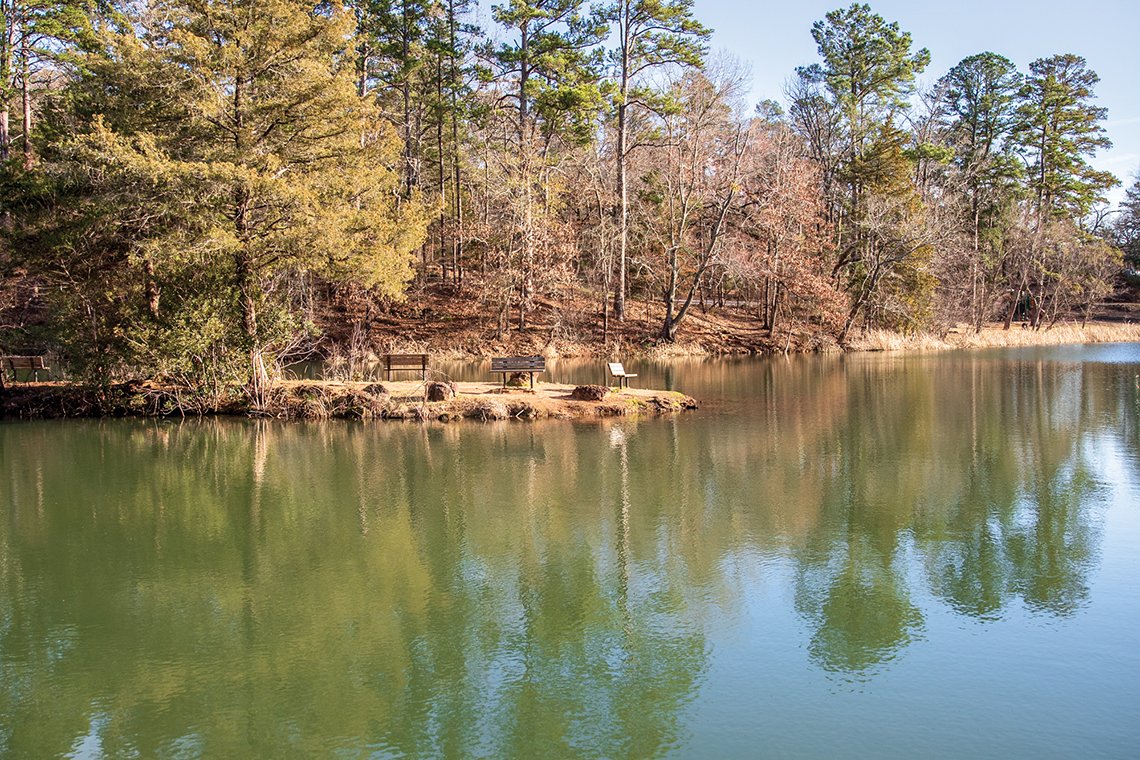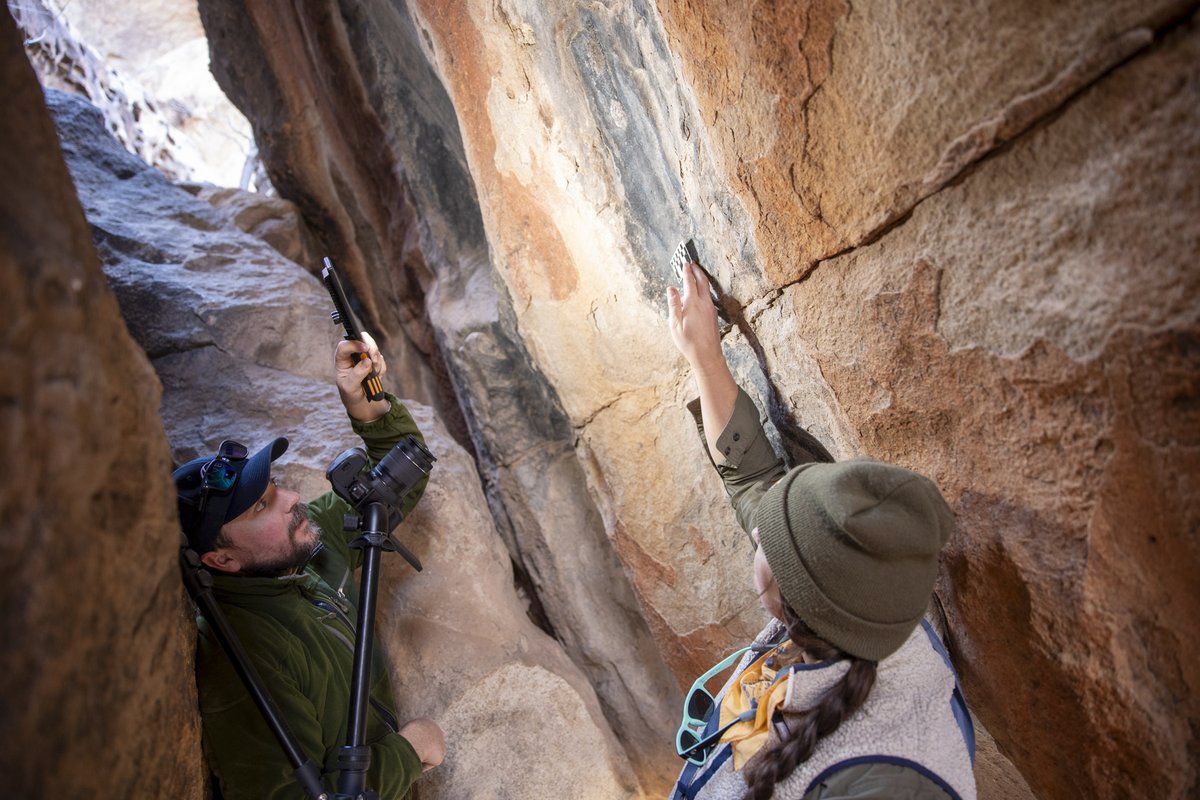Midway through the Juniper Ridge Nature Trail at Copper Breaks State Park, the rocky ground gives way to a smooth, wave-patterned surface that looks like something you might see at low tide on Galveston Island. And although you're more than 500 miles from the coast, that guess as to what created this landscape wouldn't be far off.
“Despite being a dry, semi-arid climate now, most of our park was actually formed by water,” says park interpretive ranger Tyler Jamerson. “Two hundred million years ago, our park was actually a beach.”
Nowadays, the park is no longer beach-front, but it's full of wonders all the same. Some are small, like a stripe of fibrous gypsum sparkling in the red dirt or a bright red cactus fruit. Others are much larger, such as the glittering stars overhead at night, or the Pease River flowing slowly between its sandy banks.
Farther along the Juniper Ridge trail, a picturesque bench offers a serene view of the juniper-covered hills and the park's small lake. People have been visiting the land that is now Copper Breaks for more than 10,000 years. Sitting here, it's easy to imagine why they keep coming back.
The Comanche were the dominant tribe of the area. They hunted, took shelter and sought medicine from the spirit world in the Pease River area. In 1860, Charles Goodnight and other Texas Rangers found signs of a Comanche camp near the Pease River and captured Cynthia Ann Parker, who had been taken by Comanches years earlier and married a Comanche chief.
Take your time and take it all in at this hidden gem of a state park. Copper Breaks is one of Texas' least-visited parks, but it's certainly worth the trip.
By the Numbers
Size: 1,900 acres
Closest Town: Quanah
Year Opened: 1974
Busy Season: Right after it gets warm in the spring and right before it gets cold for the winter.
Fun Fact: While it might seem that the name of the park comes from the coppery orange color of many of the rocks, it's actually the green rocks that contain copper ore.
Three Hikes
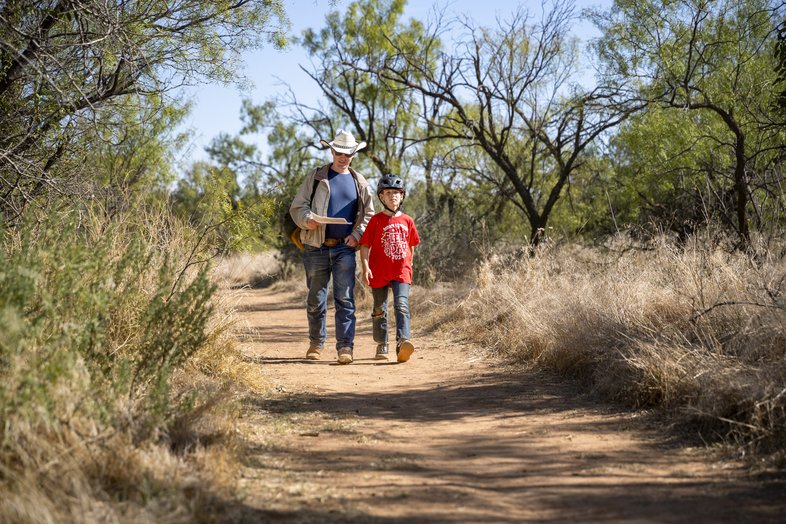
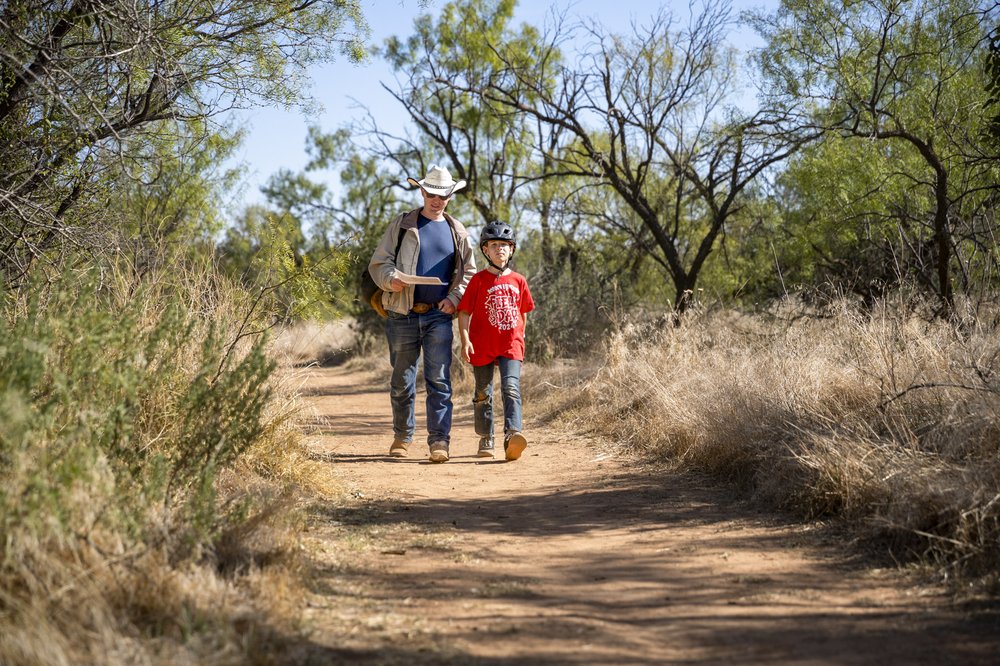
A father and son hike on the Bull Canyon Short Loop.
A father and son hike on the Bull Canyon Short Loop.
Easy: Bull Canyon Short Loop (1 mile)
This gentle, flat loop trail passes the rugged red expanse of the park's Bull Canyon (make sure you stop and peer out at the overlook), but the real special part of it is the little things along the way. The soft, powdery dirt of the trail is perfect for spotting animal tracks, so don't forget to look at the ground to see who has walked there before you. Signs point out plants such as ephedra, which people throughout history have used to help ailments from migraines to kidney disease. You might have encountered this plant's active compound if you've ever taken the drug pseudoephedrine to clear a stuffy nose. Ranger Jameson recommends this trail to spot his favorite park creature, the Texas horned lizard. “You can find them on warm mornings by harvester ant piles,” he says.
Challenging: Juniper Ridge Nature Trail (0.7 miles)
This short trail winds prettily through bright green junipers and red and grayish-blue rocky outcrops of shale. Start at the parking lot near the fishing pier, and ascend beautifully crafted cedar staircases with views overlooking the park. Like a perfectly planned Japanese garden, the trails, trees and rocks are each in harmony with the other, drawing your eye to the details. Midway through the trail, keep an eye out for a glimpse of an ancient beach — the red rocks are relics of a long-lost Permian beach. The trail is short, but allow yourself enough time to take it all in and be prepared for several sets of stairs.
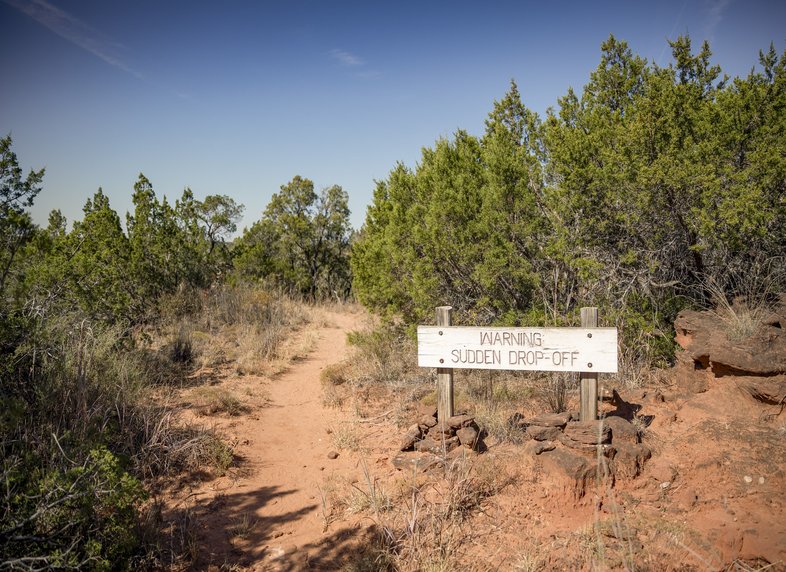
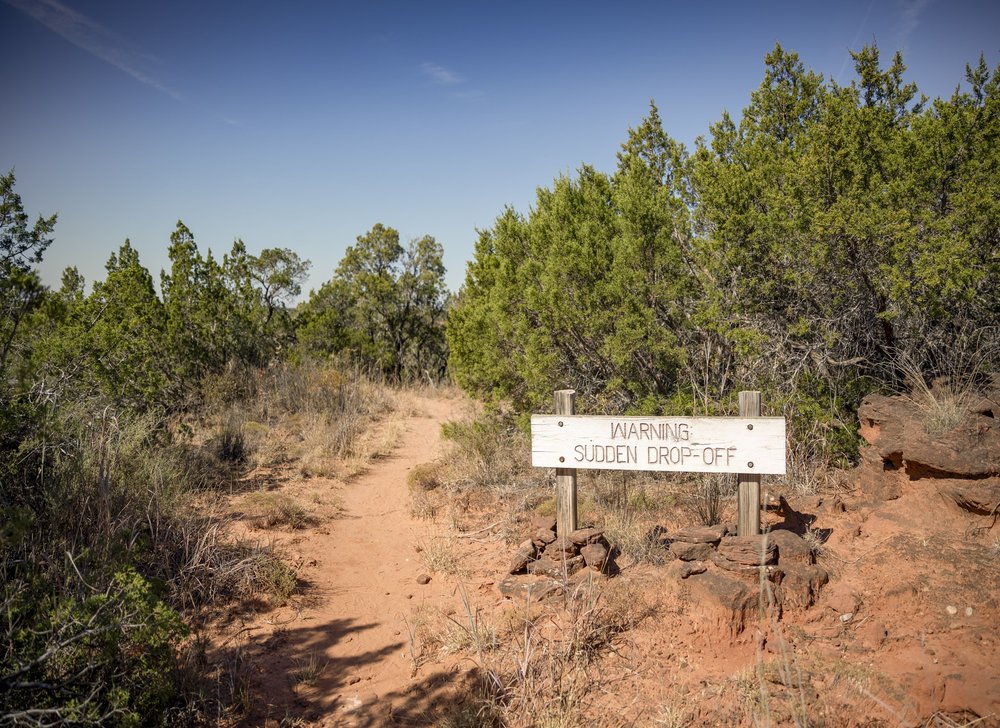
The trailhead for the Rocky Ledges Loop.
The trailhead for the Rocky Ledges Loop.
Challenging: Rocky Ledges Loop (1.1 miles)
If you have time for only one trail here, do the Rocky Ledges Loop. It's a beautiful introduction to the red and blue Permian shale that is visible in places throughout the park. Keep an eye out for stripes of gypsum in the red cliffs. The challenge of this trail is not the length, but the terrain. Be prepared to climb and descend several drops of more than 2 feet, and wear shoes with good traction. As with all hikes in this park, don't forget to bring water!
Plan Your State Park Visit
Hiking
Around 12 miles of trails traverse the park's woods, grasslands and badlands. Most are pretty short (with the exception of the 3.8-mile Equestrian Trail), but they often connect to each other, meaning you can build your own route around the park for a longer hike.
Swim the Lake
Located in a small arm of Lake Copper Breaks, the park's swimming area is a great place to cool off after a day of Texas heat.
Mountain Bike
Many of the hiking trails also allow mountain biking. The park recommends the Power Line Trail, which winds and climbs the red rocky pathways through juniper and mesquite.
Go on Horseback
Copper Breaks' 3.8-mile Equestrian Trail loops past prairie, woodland and wetland areas.
Camp/Backpack
Choose between several camping areas, including primitive sites and a group camp.
Attend a Night Sky Program
The International Dark Sky Association has designated Copper Breaks as an International Dark Sky Park. The park offers monthly star parties April through November, as well as other night sky programs throughout the year. Check the park's events page for the schedule.
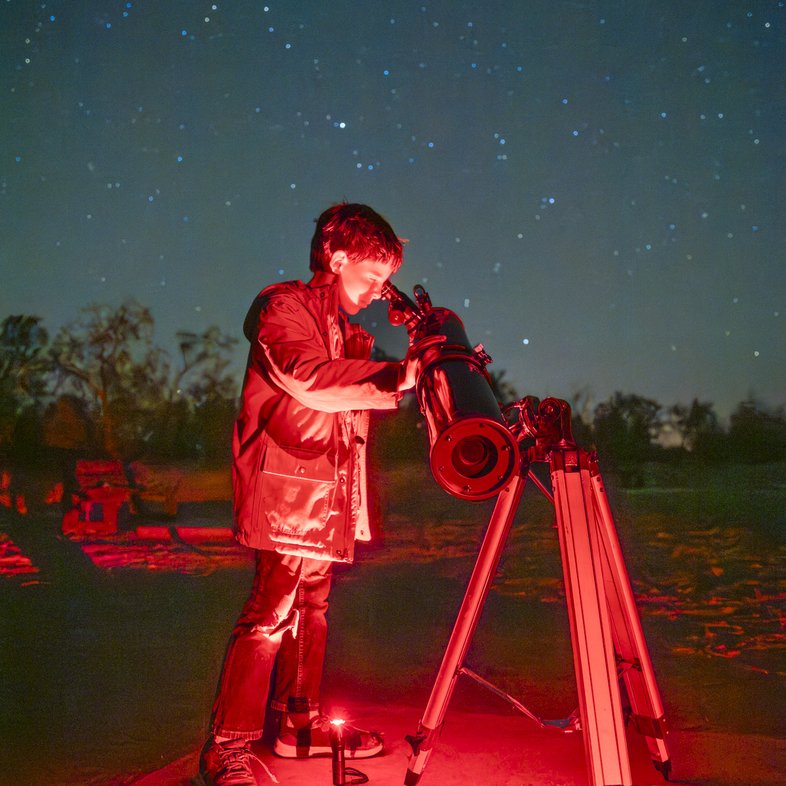
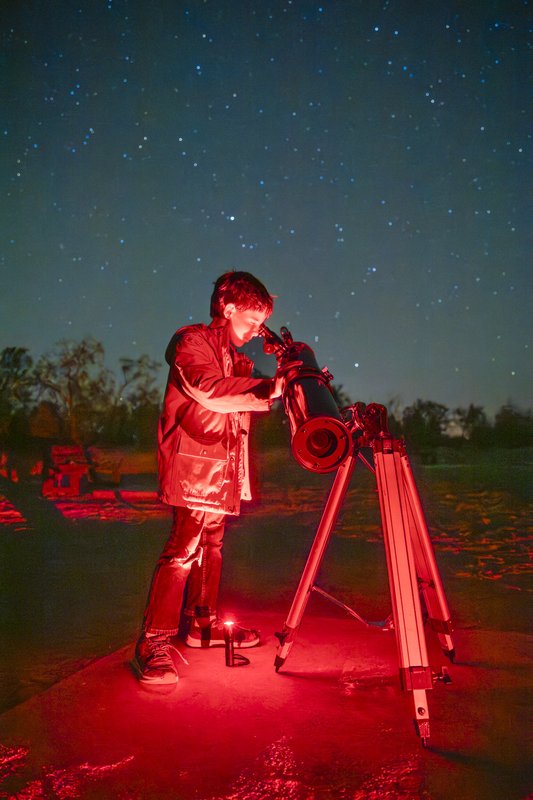
A child peeks through his telescope at the Texas night sky.
A child peeks through his telescope at the Texas night sky.
Stargaze
If your schedule doesn't line up with a star party, enjoy the grandeur of the Milky Way and a plethora of stars from your campsite, no telescope needed.
Meet the Longhorns
Join a park ranger or volunteer every Friday and Saturday afternoon to learn about the origins and history of the Texas longhorn, and meet the park's resident herd.
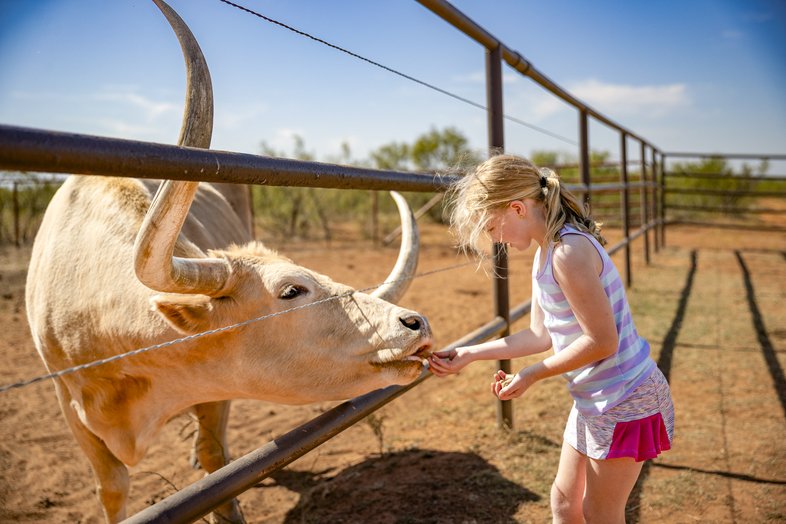
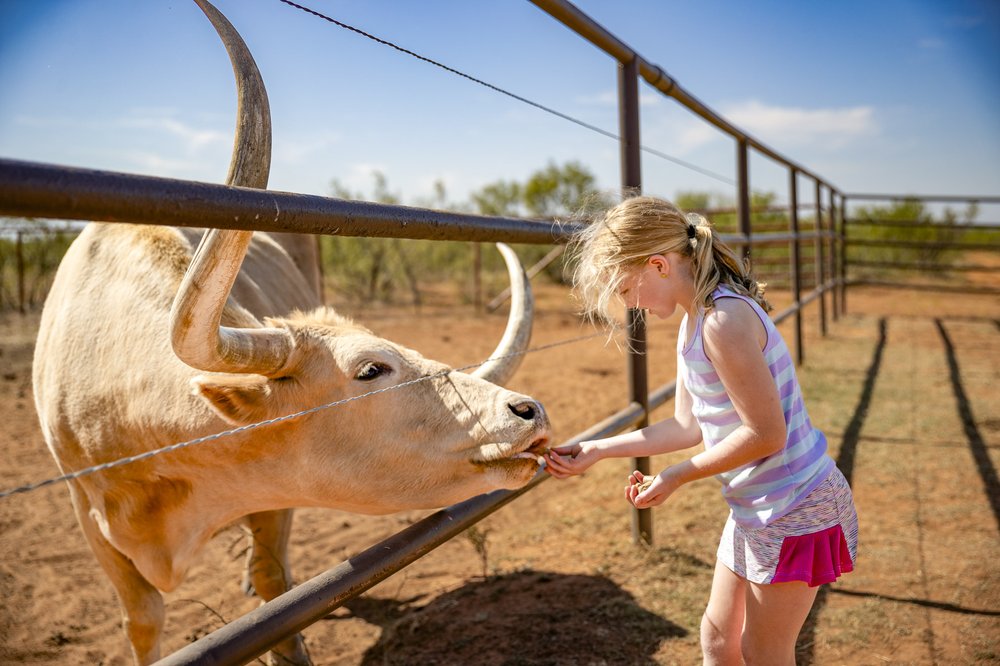
Copper Breaks is home to some of the Official State of Texas Longhorn Herd.
Copper Breaks is home to some of the Official State of Texas Longhorn Herd.
Overnight Stays
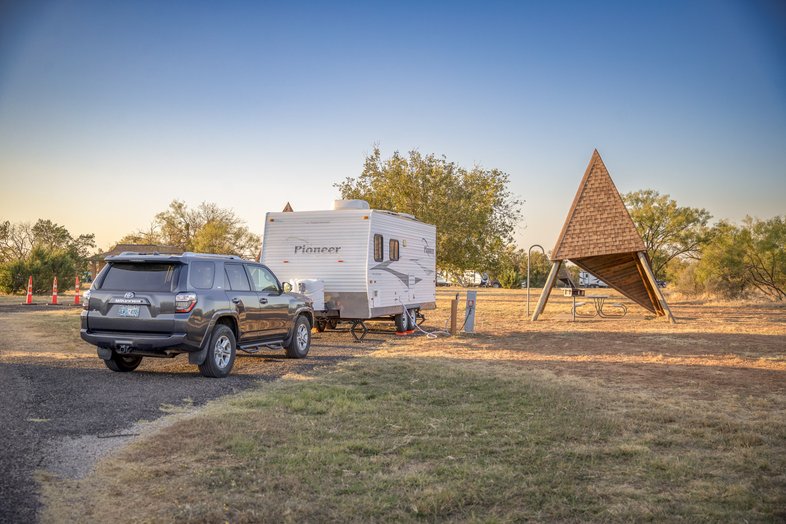
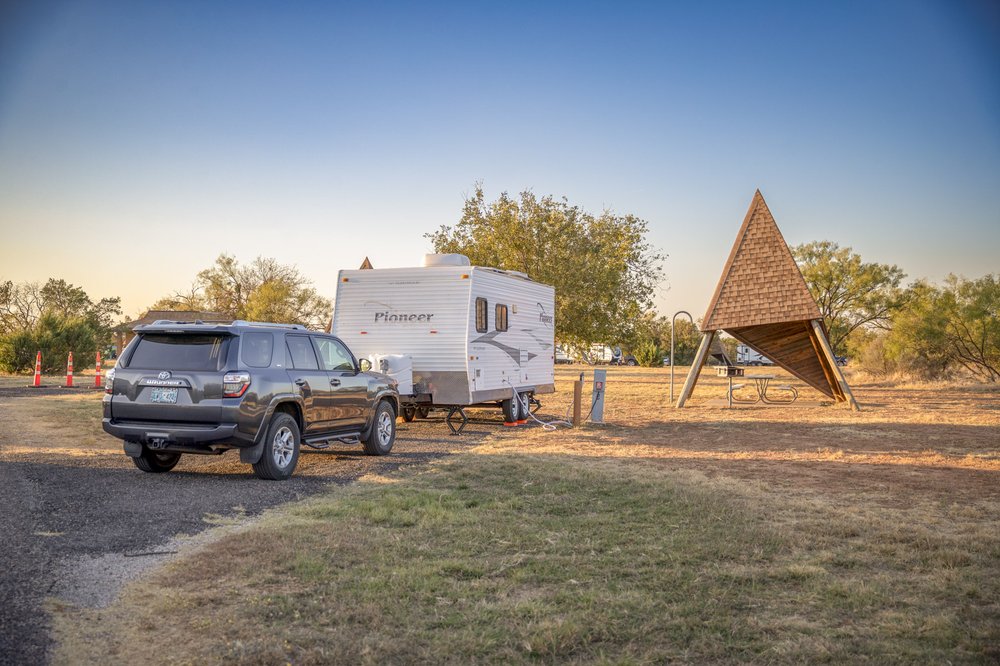
The Comanche Camping Area near Bull Canyon
The Comanche Camping Area near Bull Canyon
Shortly after the park entrance, you'll find the Kiowa Camping Area, where 11 campsites offer water, grills and easy access to a restroom. This camping area is great if you have kids - not only is the playground a stone's throw away, you'll also have easy access to the swimming area.
The Comanche Camping Area near Bull Canyon offers 24 sites with water and electricity, plus some really cool shade shelters.
Bring your horse along and camp at the Big Pond Equestrian Camping Area, where 14 campsites and a tie-off area for horses allow both you and your equine friend to spend a comfortable night in the park.
For a less social experience, sleep at one of the park's six hike-in primitive sites; for a more social one, book one of two group sites.
Wildlife
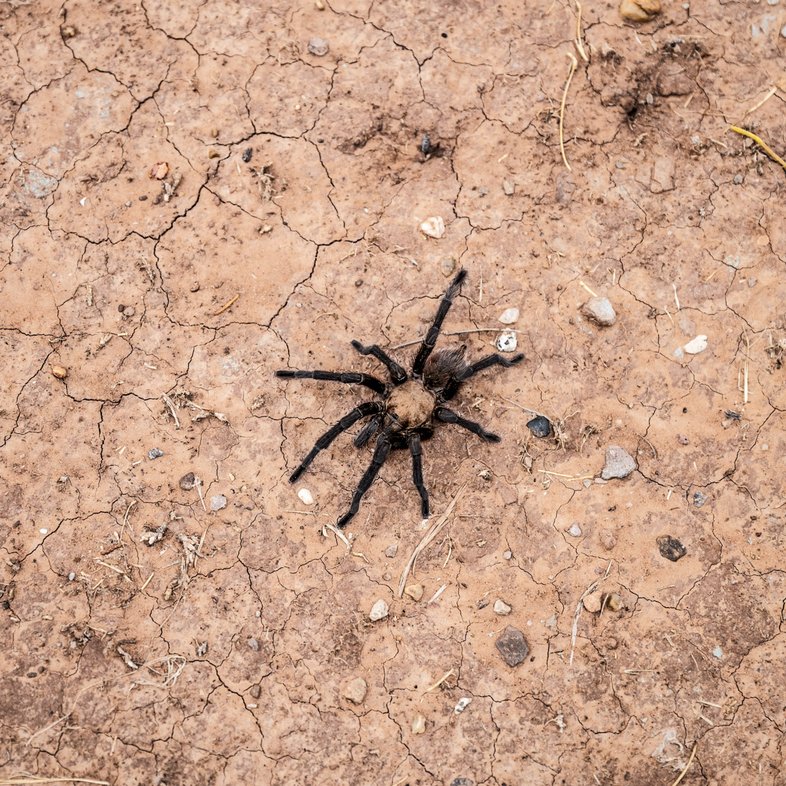
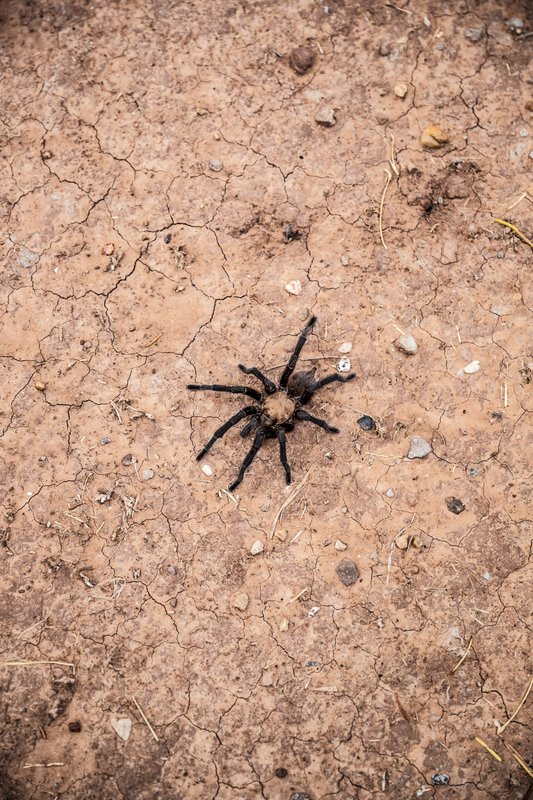
The park's resident tarantulas look for love every year between May and August.
The park's resident tarantulas look for love every year between May and August.
You probably won't see a Plains pocket gopher, but you'll sure know where they've been. These critters dig through the park's red soil, leaving telltale mounds that are a little bigger than mole hills. Underground, they search for roots and tubers to eat, and excavate cozy nests that they line with soft plant materials.
Copper Breaks is a great place to spot the Texas horned lizard (or horny toad, as many of our readers know them). They rely heavily on harvester ants as a food source, so if you see a highway of ants crossing a trail, look around to see if you can spot the state reptile of Texas!
Keep an eye out for tarantulas meandering the park's trails. You're especially likely to encounter these eight-legged hikers between May and August, when they're out searching for a mate.
Selfie Spots
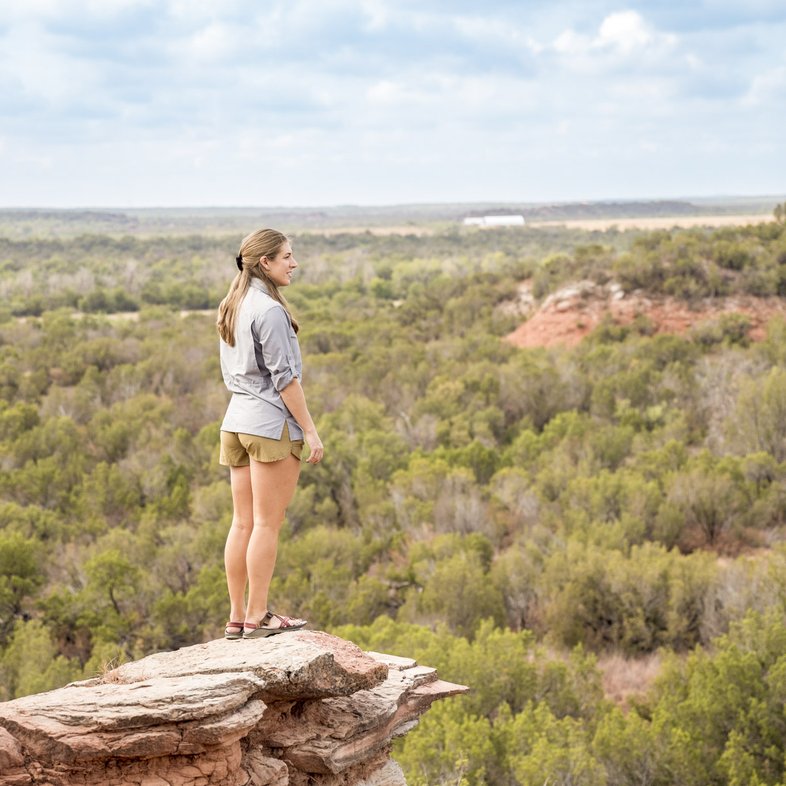
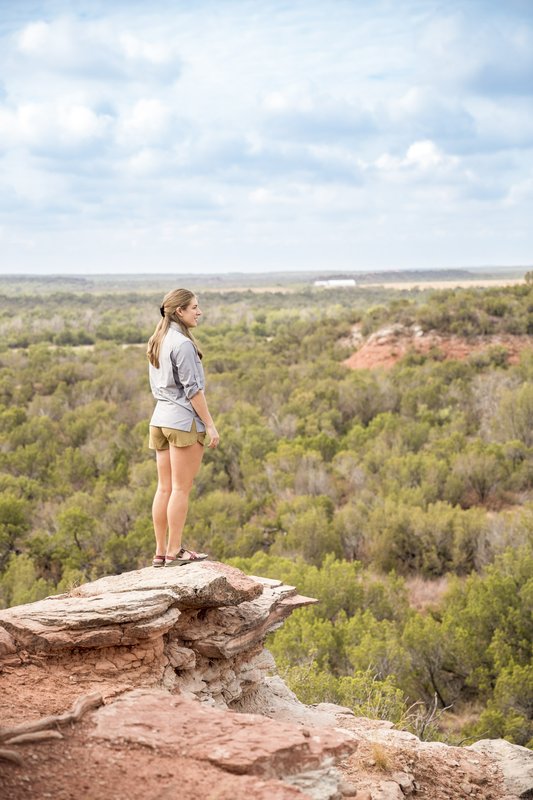
The view from atop the Pease River Valley Overlook
The view from atop the Pease River Valley Overlook
Juniper Ridge Overlook
Along the winding, climbing Juniper Ridge Nature Trail, this spot offers a view of the park's lake and the surrounding badlands and juniper breaks. Take your own “break” on a bench overlooking the water.
Pease River Valley Overlook
Close to the end of the Rocky Ledges trail (if you're hiking clockwise), hikers will encounter an amazing view. From the top of a rocky bluff, you can see the Pease River, cutting a sandy path through the land.
With a Longhorn
Members of the Texas State Longhorn Herd reside at Copper Breaks, and visitors can attend one of the park's weekly Meet the Longhorns programs. The cattle enjoy meandering around the brushy vegetation during the hot days of summer. Park officials can usually coax them out of wherever they're relaxing by offering some treats.
